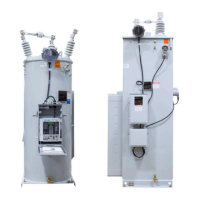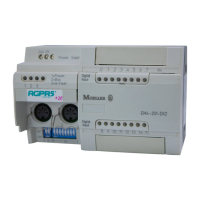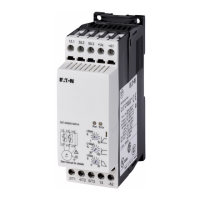ELC Programming Manual
For more information visit: www.eaton.com MN05003003E
3-16
S Source operand: if there is more than 1 source operand, then S
1
, S
2
… is used to describe
them.
D Destination operand
If an operand is only represented as a constant (K, H) then m, m
1
, m
2
, n, n
1
, n
2
is used to
describe them.
The Length of Operand (16-bit or 32-bit instruction)
The length of an operand can be divided into two groups: 16-bit and 32-bit. A”D” before an
instruction means it’s a 32-bit instruction.
16-bit MOV instruction
X0
K10
D10
MOV
When X0=ON, K10 is moved into D10.
32-bit DMOV instruction
X1
D10 D20
DMOV
When X1=ON, the 32-bit contents of D11, D10 is
moved to D21, D20.
Description of the format for the application programming instructions
1
2
3
4
6
7
API
10
P
CMP
Mnemonic
Operands Function
Compare
Program Steps
CMP, CMPP: 7 steps
Bit Devices Word Devices
XY
M
S
K
H
KnX
KnY
KnM
KnS
T
D
C
E
F
Type
OP
D
** ***
*****
*
**
**
**
ELCM
32 P16
D
S
1
S
2
D
S
1
S
2
*
**
*
*
**
*
PB\PA\PH
5
{
ELC ELCB
PVPB PB PH/PA
32 P1632 P1632 P1632 P16
DCMP, DCMPP: 13steps
API number for the instruction
The core mnemonic code of the instruction
A “D” in this box means the instruction is a 32 bit instruction if a “D” is added as a prefix
A “P“ in this box indicates the instruction can be used as a pulse instruction
The operand format of the instruction
The description of the instruction
The symbol “*” means this instruction supports the associated data type
The number of program steps for the instruction
The ELC models that support the following for each instruction:
A “16” represents 16-bit instruction format
A “32” represents 32-bit instruction format
A “P” represents pulse instruction format

